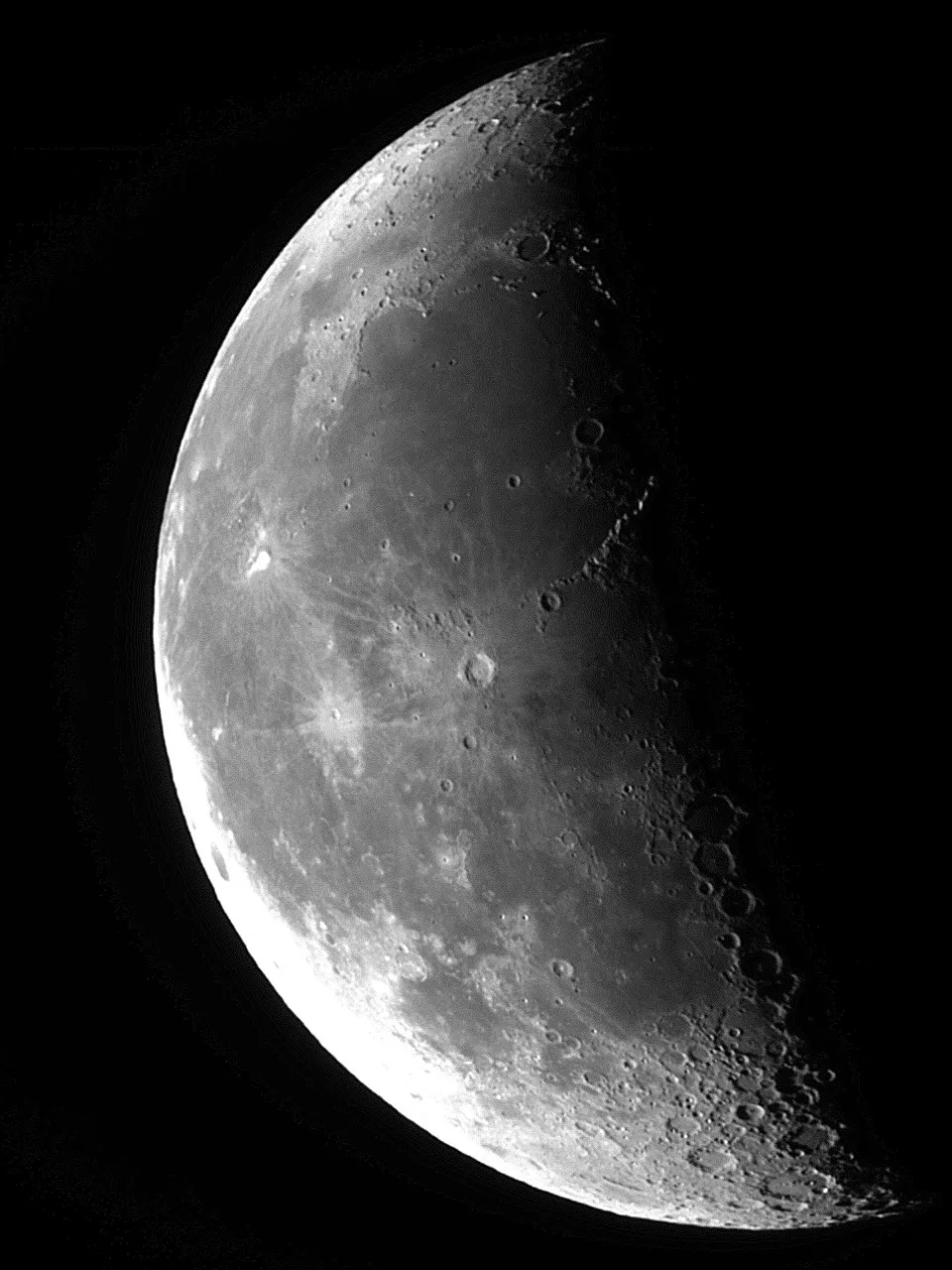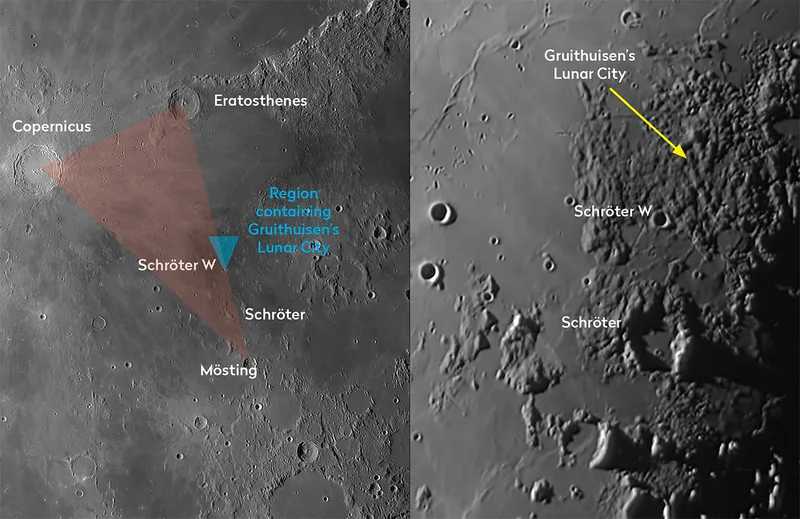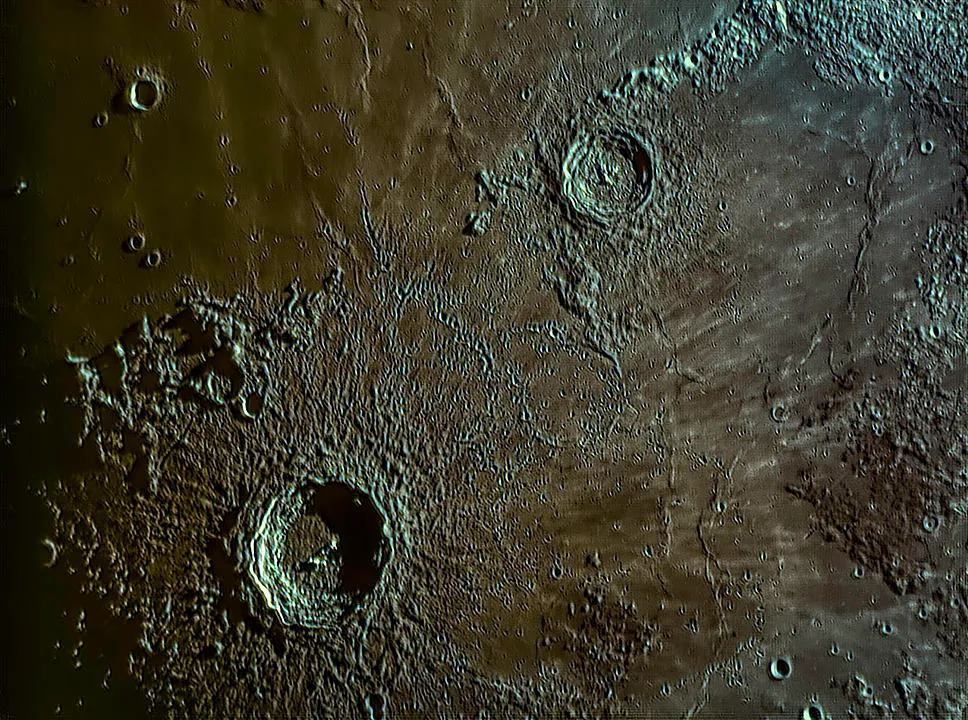If nothing else, Gruithuisen’s Lunar City sounds rather grand.
The reality is not quite so impressive, but this is still an interesting clair-obscur effect on the Moon to track down.
In order to see the Gruithuisen’s Lunar City on the Moon, the position of the evening terminator (the line dividing light and shade on the lunar surface) has to be right.
This is measured by a value known as co-longitude and can be obtained for a given date and time from free software such as WinJupos and the Virtual Lunar Atlas.
Here we need a co-longitude of 185.0° with the Moon just past last quarter.
For more info, read our guides on how to observe the Moon and how to photograph the Moon

What is Gruithuisen's Lunar City?
It's not a real city of course, but rather a lighting effect making a small section of the Moon appear to have linear streets and buildings.
The feature was named at a time when it was thought the Moon was populated.
It was discovered in 1824 by Franz von Paula Gruithuisen, who made multiple observations of it, calling the city ‘Wallwerk’.
How to find Gruithuisen's Lunar City

Finding Gruithuisen's Lunar City can be challenging.
The ‘city’ is located using giants crater Copernicus (93km) and crater Eratosthenes (60km).
Imagine them forming one side of a large isoceles triangle.
The other point is marked by the smaller 27km crater Mösting, further to the south and near the terminator.
Starting at Mösting, head back along the line towards Eratosthenes.
For more like this, read our guides on the best features to observe on the Moon and underrated Moon features

About one-fifth of the way you’ll arrive at heavily eroded 35km Schröter, a crater that appears to have lost its southern rim.
Keep going towards Eratosthenes and the next obvious crater is Schröter W, which has a diameter of 10km.
Schröter W has a smaller 3km crater, Schröter A, inside it which will be in darkness when the terminator is nearby.
The ‘streets’ of Gruithuisen’s City appear from the shadows cast in the highland region to the north and east of Schröter W.
Have you managed to find or even photograph Gruithuisen's Lunar City? Let us know by emailing contactus@skyatnightmagazine.com.

